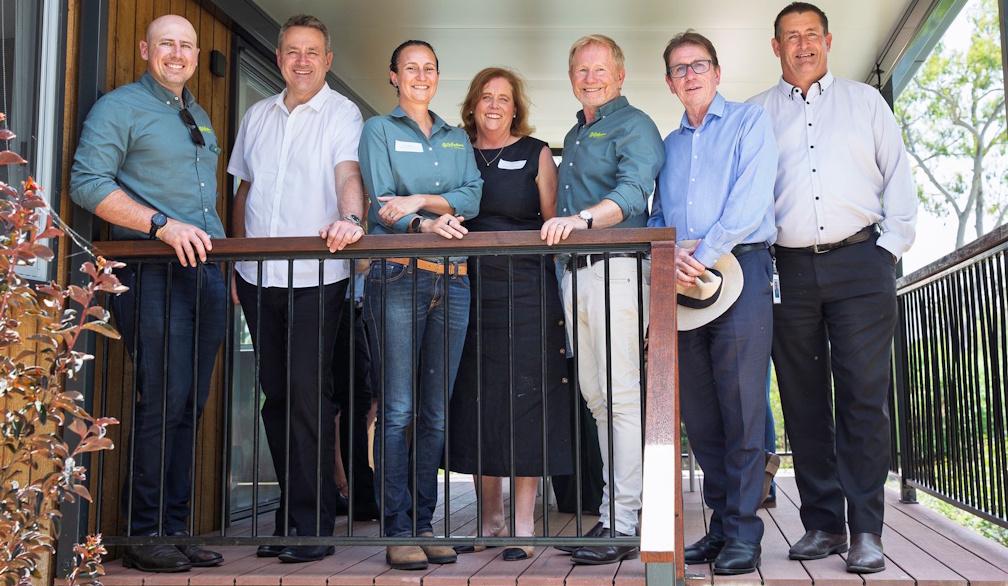4 ways to bring down rent and build homes faster than Labor's $10 billion housing fund
- Written by Peter Martin, Visiting Fellow, Crawford School of Public Policy, Australian National University
Treasurer Jim Chalmers is the first in decades to declare war on what he calls the “pain of rising rents[1]”.
His first budget, in October, and his second, this month, contained a suite of measures designed to stop rents going “through the roof[2]”. By far the biggest of those – the blockbuster – was a A$10 billion Housing Australia Future Fund[3] to finance social and affordable housing.
If you think the idea of building a fund rather than building houses sounds odd, you probably think the same way about the Medical Research Future Fund[4], the Future Drought Fund[5], the Disaster Ready Fund[6] or the $250 billion Future Fund[7] itself, which was set up to pay public service and defence pensions.
Those were all previous Coalition government ideas – the likes of which were satirised in ABC TV’s The Hollowmen[8]. Back in 2008, it came up with a $150 billion “Perpetual Endowment Fund[9]”, created for no particular purpose other than “to meet the future challenges of this nation”.
I can think of at least four things that would do more to restrain rents than Labor’s $10 billion fund – and one of them would do it a lot quicker.
$10 billion, but off-budget and largely unspent
The (political) genius of these sorts of funds is they make it look as if you are spending a lot, without the need to spend much at all.
The $10 billion (or whatever that goes into the fund) isn’t actually “spent” as far as the budget is concerned. It doesn’t come off the budget surplus, or add to the budget deficit, because it remains in the government’s hands.
“Rear Vision”, The Hollowmen, ABC.The fund can be thought of as a fiction. The money stays in the government’s hands until some of it is spent, except that while in the government’s hands, it is invested in the stock market and other places to try and earn a return.
But it doesn’t always work. During 2022, the usually successful Future Fund went backwards[10].
When Labor came up with the idea of the Housing Australia Future Fund in 2021[11], it looked a surer bet. Governments could borrow at “ultra-low interest rates[12]” and the returns on investments were good.
To “protect the balance of the fund[13]”, the government has limited withdrawals to $500,000 per year, meaning a less-grand-sounding commitment to spend up to $500,000 a year would have achieved just as much.
Housing Minister Julie Collins’ counter to that criticism is to say that creating a fund – an “enduring promise” – will protect housing spending from the “whims of future governments”
And yet the legalisation says every piece of spending from the fund will require formal government approval[14].
Another reason for limiting the amount that can be spent each year (apart from protecting the balance of the fund) is that there are practical limits on how quickly homes can be built.
Limits on how quickly new homes can be built
A truly bizarre[15] and long-established fact of Australian home building is that it never gets done more quickly. If you went back to the 1990s, the 1980s or even the 1970s, you would find that the number of houses completed per quarter was roughly what it is today, between 22,000 and 29,000.
The number of houses under construction varies wildly; at times it has been low, late last year it reached an all-time high. But the number of houses completed seems to chug along at the same rate regardless. All that commencing more builds does is push out construction times.
It’s the same for units, which the Bureau of Statistics classifies as “other residential”. The number being completed per quarter is no higher than it was a decade ago, but the number under construction has climbed much higher.
All that funding more than a small number of extra builds per year would do is push construction costs higher and push out completion times.
The Australian Greens[16] might well be right to oppose the artifice of a “fund,” but they are probably wrong to propose much more spending per year than the $500,000 the government is promising and the 30,000 extra homes over five years it says it will deliver.
I can think of at least four things that would restrain rents more than the fund, one of which Chalmers has delivered in the budget, albeit in a small dose.
1. Boost rent assistance
The “largest increase in more than 30 years” in Commonwealth Rent Assistance[17] amounts to $16 per week.
It’ll help the 1.3 million concession card holders who receive it. But it is not much, and not much more in the future, because Chalmers has not acted on the recommendation of his economic inclusion advisory committee to increase it in line with rents actually paid[18], rather than the consumer price index.
Chalmers might well have been concerned that a bigger increase in rent assistance would have pushed up rents, but there’s a way of dealing with that.
2. Limit rent increases
Price control is anything but uncommon. In most states, increases in the prices we can be charged for electricity, gas and water are limited by regulation. In the Australian Capital Territory, increases in rents[19] are limited by regulation.
The maximum permitted increase is 110%[20] of the most recent annual increase in Canberra rents reported to the Bureau of Statistics. In the year to March, Canberra rents climbed 5.54%, making the maximum permissible increase 6.1%.
It works well, and Canberra landlords don’t seem to have withdrawn from the market. Among Australia’s capitals, Canberra’s rental vacancy rate is the highest[21].
3. Bribe states and councils to rezone land
Another option is to provide incentive payments[22] to state and local governments that free up their planning systems and build more housing.
Conditional payments are not novel. The Commonwealth provided special payments to states that fell in line with its deregulation agenda for about a decade from the mid-1990s[23].
4. Restrict negative gearing to new builds
Negative gearing and the concessional rate of capital gains tax that accompanies it drive Australians into becoming landlords. But if they buy existing homes to do it, they do no more than turn owner-occupied homes into rented homes.
Limiting negative gearing to newly-built homes – as Labor promised in 2019[24] – would get them to fund new builds.
While it’s true that getting more Australians into affordable homes is anything but easy, some of what we need to do is straightforward. We can do better than a grand-sounding big bucks fund.
Read more: The compelling case for a future fund for social housing[25]
References
- ^ pain of rising rents (ministers.treasury.gov.au)
- ^ through the roof (ministers.treasury.gov.au)
- ^ Housing Australia Future Fund (ministers.treasury.gov.au)
- ^ Medical Research Future Fund (www.health.gov.au)
- ^ Future Drought Fund (www.agriculture.gov.au)
- ^ Disaster Ready Fund (nema.gov.au)
- ^ Future Fund (www.futurefund.gov.au)
- ^ satirised in ABC TV’s The Hollowmen (www.smh.com.au)
- ^ Perpetual Endowment Fund (www.youtube.com)
- ^ backwards (www.futurefund.gov.au)
- ^ 2021 (webarchive.nla.gov.au)
- ^ ultra-low interest rates (theconversation.com)
- ^ protect the balance of the fund (ministers.treasury.gov.au)
- ^ formal government approval (ministers.treasury.gov.au)
- ^ truly bizarre (theconversation.com)
- ^ Australian Greens (www.maxchandlermather.com)
- ^ Commonwealth Rent Assistance (ministers.treasury.gov.au)
- ^ with rents actually paid (www.dss.gov.au)
- ^ increases in rents (www.acat.act.gov.au)
- ^ 110% (www.acat.act.gov.au)
- ^ the highest (www.domain.com.au)
- ^ incentive payments (www.theage.com.au)
- ^ mid-1990s (ncp.ncc.gov.au)
- ^ 2019 (webarchive.nla.gov.au)
- ^ The compelling case for a future fund for social housing (theconversation.com)
Authors: Peter Martin, Visiting Fellow, Crawford School of Public Policy, Australian National University














